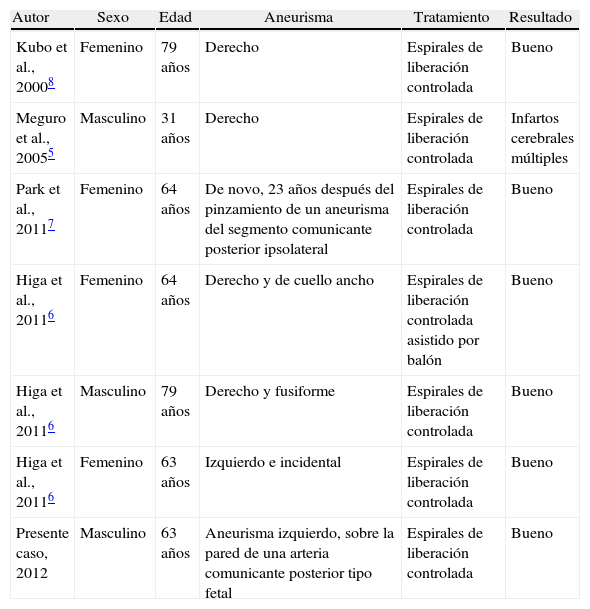Los aneurismas verdaderos de la arteria comunicante posterior se originan de la pared de esta arteria sin comprometer la carótida interna, lo que permite diferenciarlos de los aneurismas del segmento comunicante posterior. Estas lesiones son infrecuentes, por lo que sus relaciones anatómicas no han sido descritas en detalle y los reportes referentes a su tratamiento endovascular son escasos.
En el presente manuscrito se expone el caso de un paciente portador de un aneurisma verdadero de la arteria comunicante posterior izquierda que fue tratado por vía endovascular. Además se presenta una revisión de la literatura para ilustrar los detalles anatómicos y técnicos más relevantes para lograr su tratamiento exitoso.
True posterior communicating artery aneurysms originate exclusively from the wall of this artery and should be differentiated from aneurysms of the posterior communicating segment of the distal carotid artery. As these lesions are rare, their anatomical relationships have been poorly described; likewise, reports concerning their endovascular treatment are extremely rare and the technical aspects poorly detailed.
A case of a patient with a true aneurysm of the left posterior communicating artery treated by endovascular coiling is presented. A literature review was also conducted to illustrate the anatomical and technical details relevant to achieving its successful treatment.
Article

If it is the first time you have accessed you can obtain your credentials by contacting Elsevier Spain in suscripciones@elsevier.com or by calling our Customer Service at902 88 87 40 if you are calling from Spain or at +34 932 418 800 (from 9 to 18h., GMT + 1) if you are calling outside of Spain.
If you already have your login data, please click here .
If you have forgotten your password you can you can recover it by clicking here and selecting the option ¿I have forgotten my password¿.








